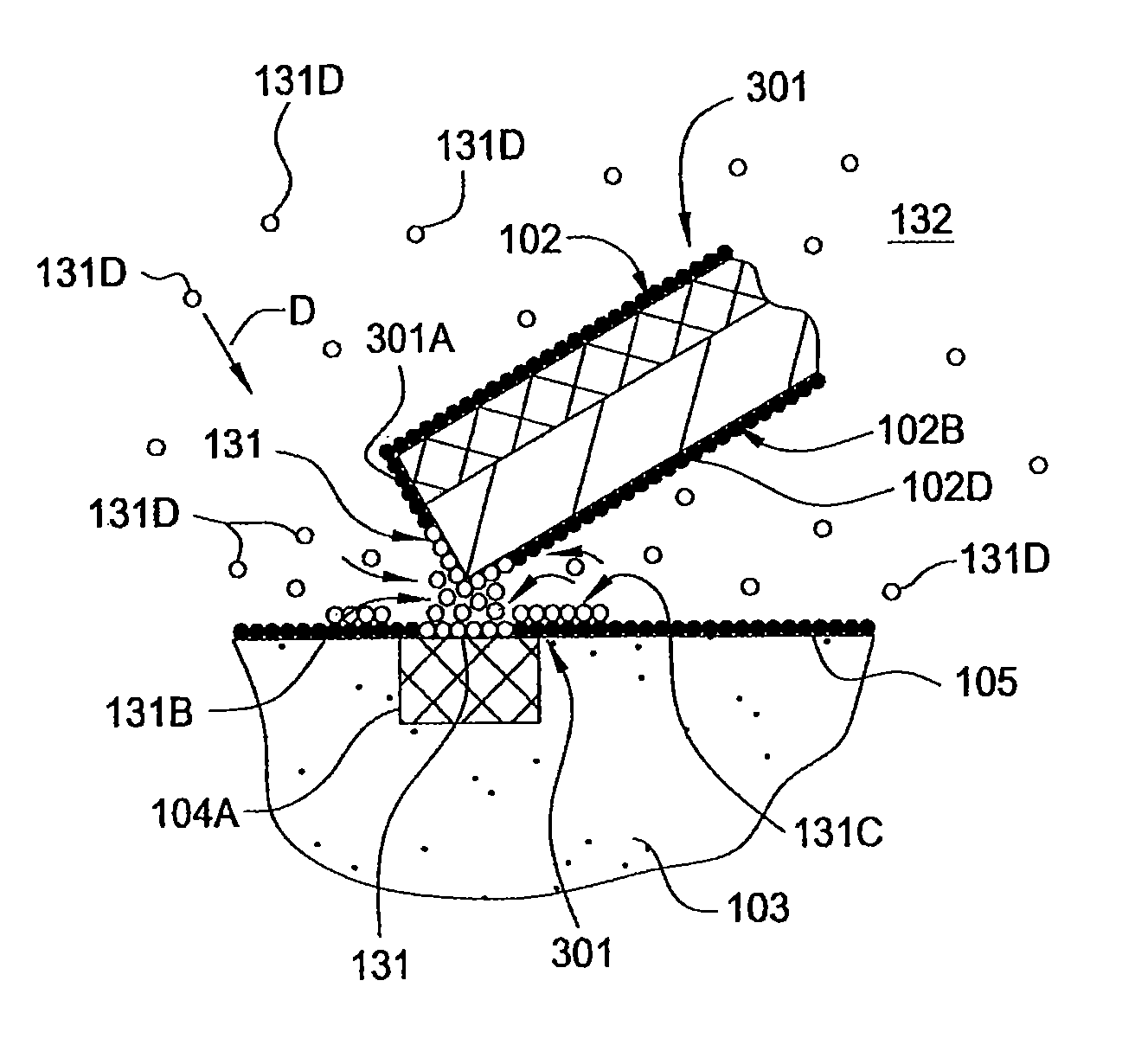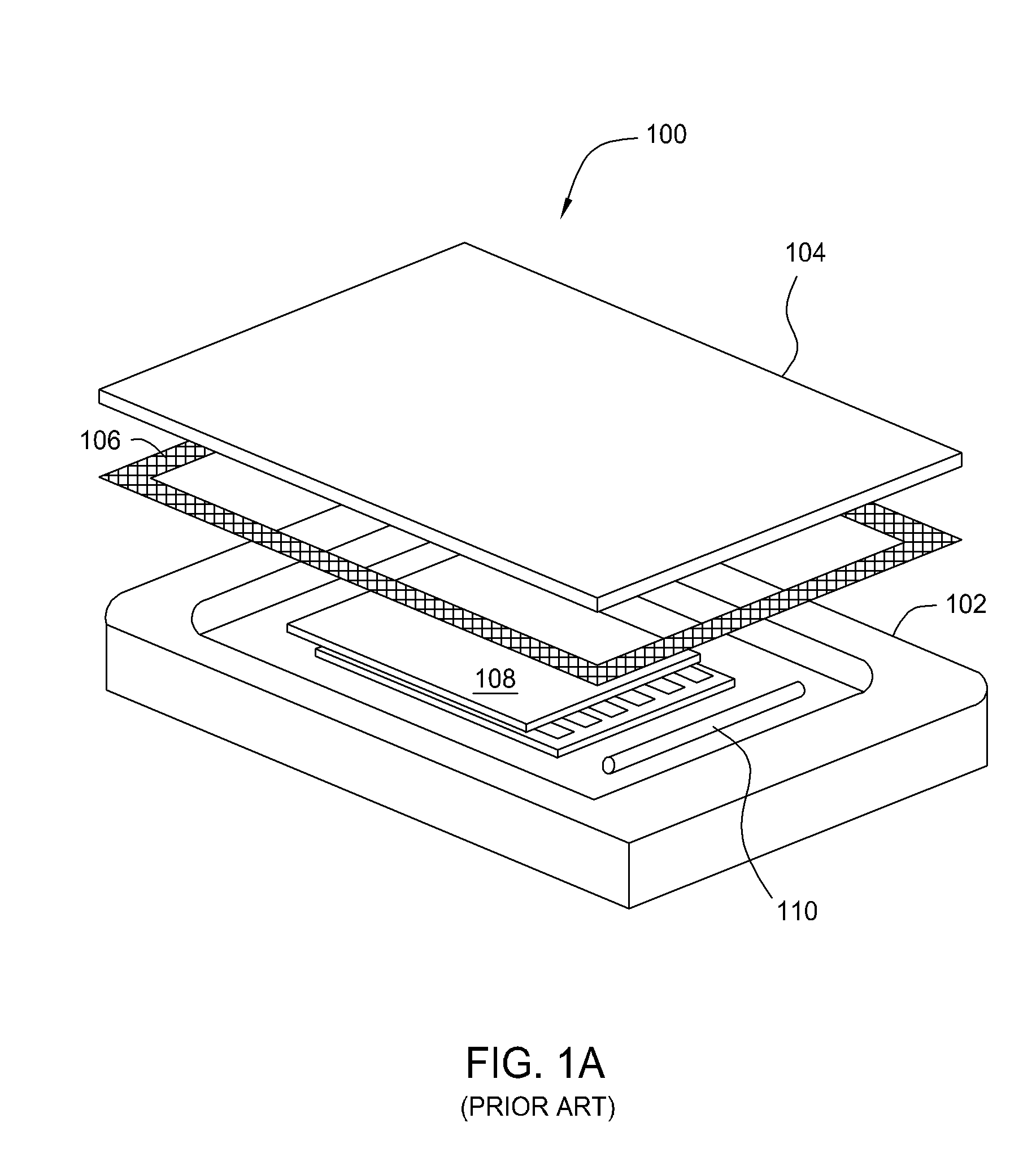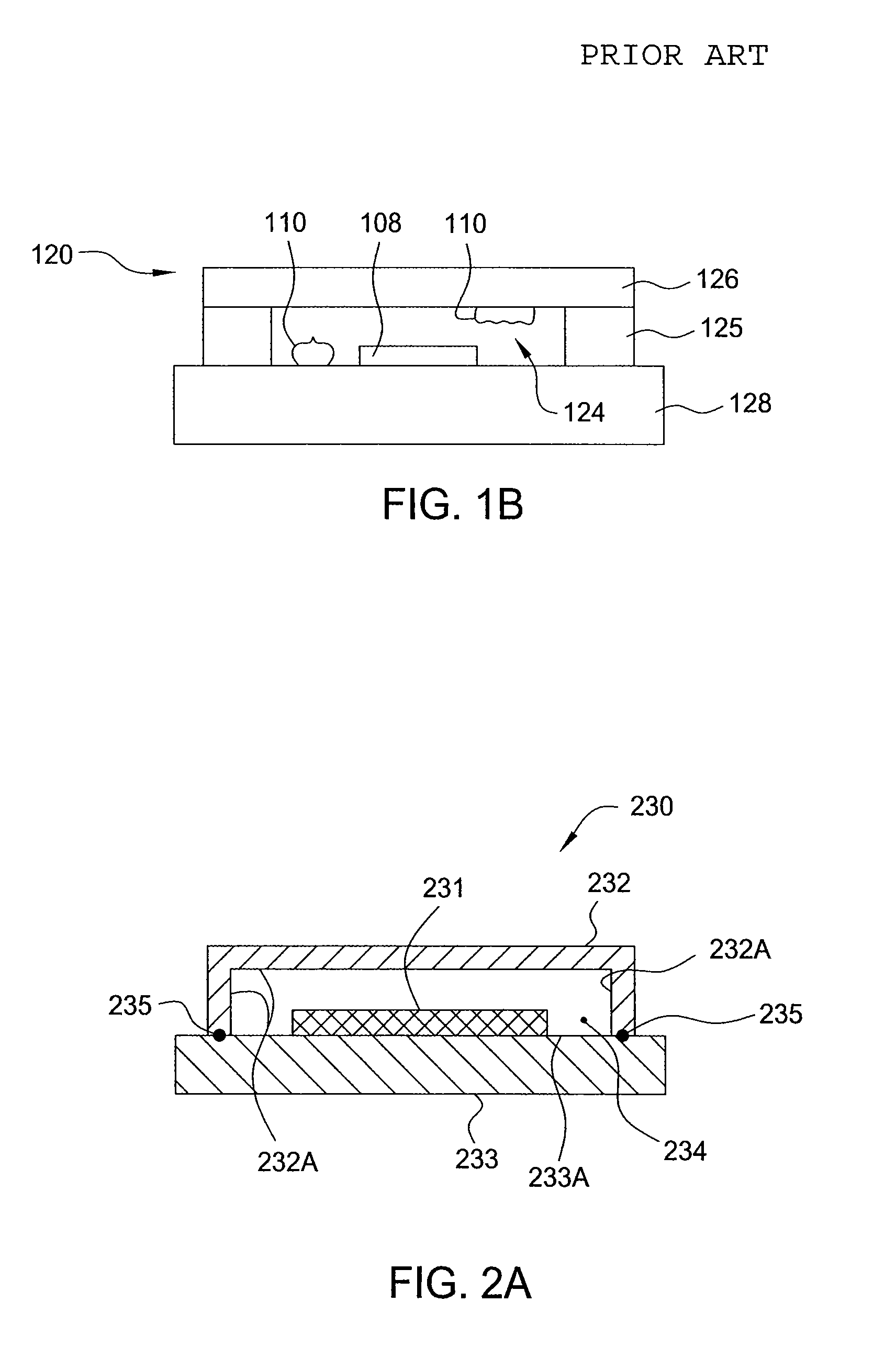Preferentially deposited lubricant to prevent anti-stiction in micromechanical systems
a technology of micromechanical systems and lubricants, applied in the direction of resistive material coating, microstructural devices, microstructure technology, etc., can solve the problems of stiction-type failure, device failure or malfunction, etc., and achieve the effect of reliably preventing stiction-related device failures and high diffusion ra
- Summary
- Abstract
- Description
- Claims
- Application Information
AI Technical Summary
Benefits of technology
Problems solved by technology
Method used
Image
Examples
Embodiment Construction
[0050]Embodiments of the present invention generally relate to a device that has an improved usable lifetime due to the presence of a lubricant that reduces the likelihood of stiction occurring between the various moving parts of an electromechanical device. Embodiments of the present invention also generally include a device, and a method of forming the device, that has one or more surfaces or regions that have a volume of lubricant disposed thereon. This volume that acts as a ready supply of “fresh” lubricant to prevent stiction from occurring between interacting components of the device. The ready supply of “fresh” lubricants may also be used to replenish damaged lubricants (worn-off, broken down, etc) at the contacting surfaces where stiction generally occurs. In one example, aspects of this invention may be especially useful for fabricating and using micromechanical devices, such as MEMS devices, NEMS devices, or other similar thermal or fluidic devices. In one embodiment, an a...
PUM
| Property | Measurement | Unit |
|---|---|---|
| operating temperatures | aaaaa | aaaaa |
| operating temperatures | aaaaa | aaaaa |
| bonding temperatures | aaaaa | aaaaa |
Abstract
Description
Claims
Application Information
 Login to View More
Login to View More - R&D
- Intellectual Property
- Life Sciences
- Materials
- Tech Scout
- Unparalleled Data Quality
- Higher Quality Content
- 60% Fewer Hallucinations
Browse by: Latest US Patents, China's latest patents, Technical Efficacy Thesaurus, Application Domain, Technology Topic, Popular Technical Reports.
© 2025 PatSnap. All rights reserved.Legal|Privacy policy|Modern Slavery Act Transparency Statement|Sitemap|About US| Contact US: help@patsnap.com



